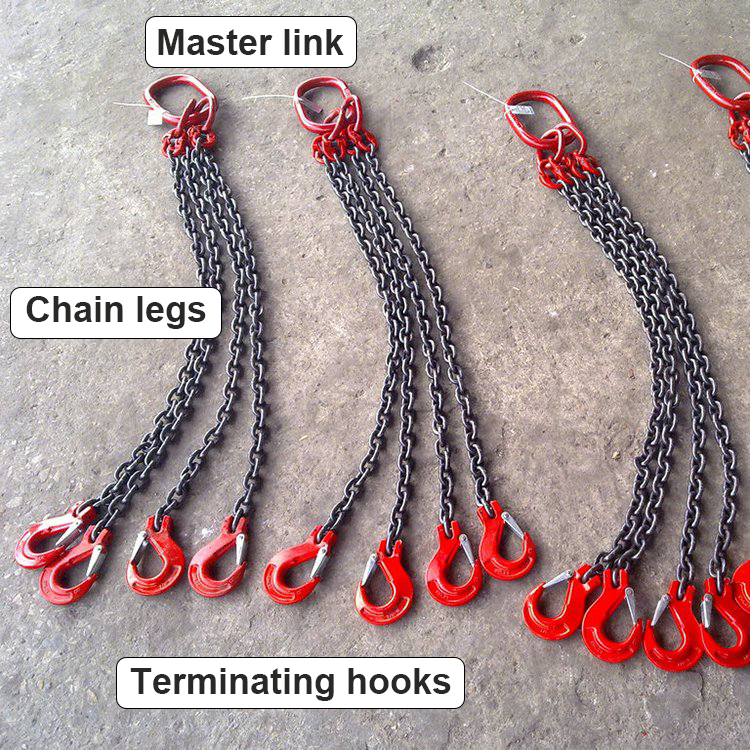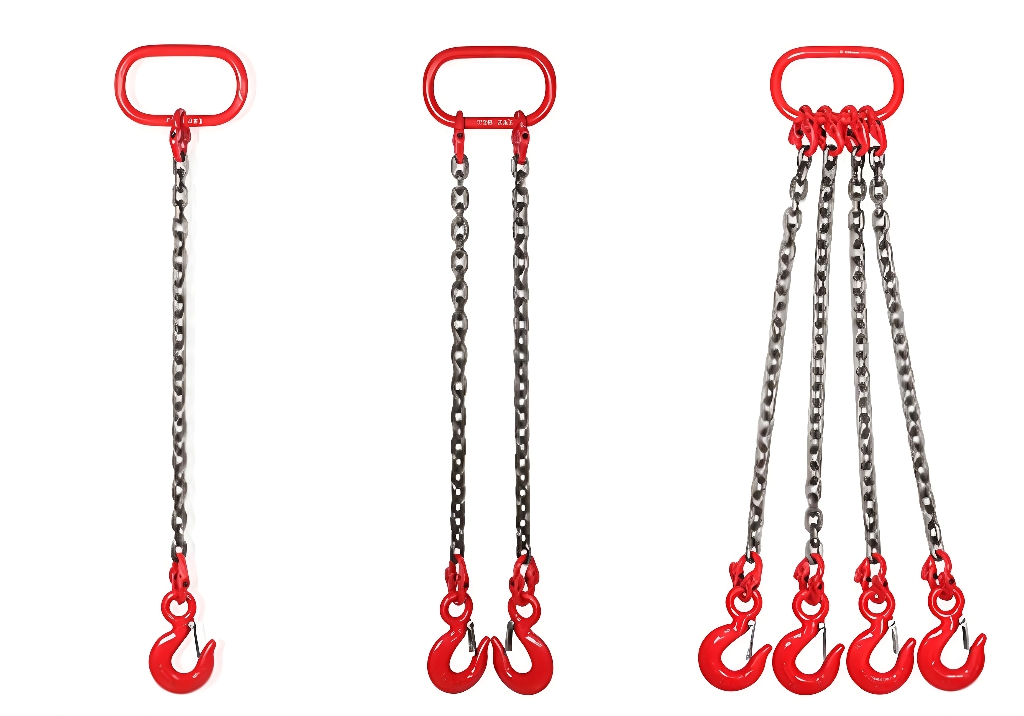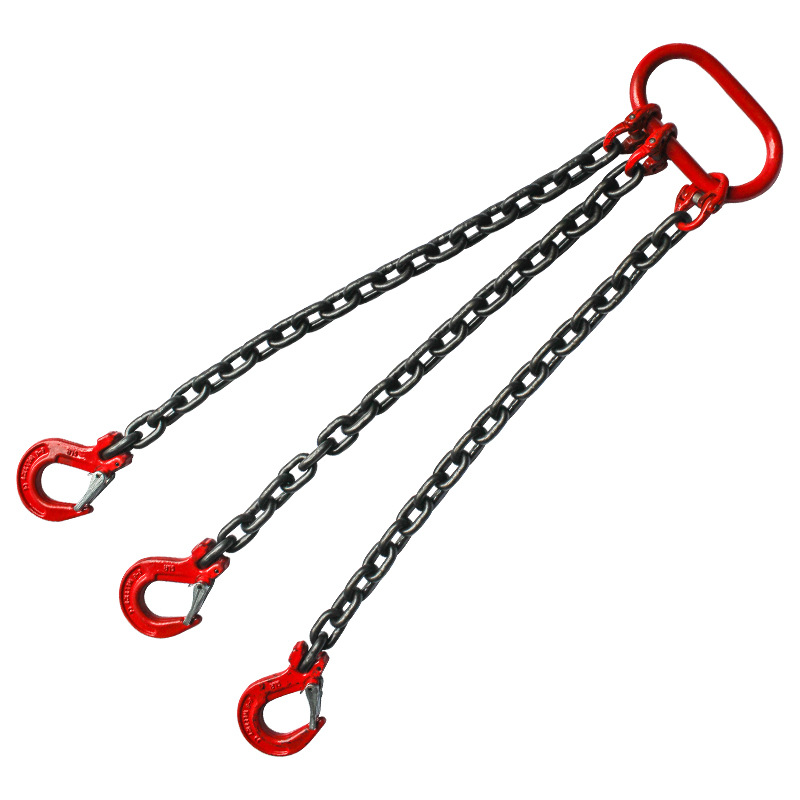Our staff will contact you within 12 hours, You can also contact us through the following ways:
Contact US WhatsApp: +86 18263873187
- Email: [email protected]
- Tel: +86 18263873187
- Web: www.lifting-chain.com
G80 chain slings remain a daily workhorse because alloy links handle heat, point loading, and repeated rigging cycles with predictable inspection routines. This guide follows a practical, product-first structure: identify your task, select the leg configuration and hooks, apply angle factors, and record traceability. Because many readers also follow our mining products, we include a clear standards separation section: our mining round-link chains pass DIN 22252 breaking-load tests (see our public test video), while our G80 chain slings follow overhead-lifting norms and traceable factory proof testing. You get the right sling for the lift—and you avoid mixing mining and lifting specifications.
A chain sling packages Grade-80 alloy chain with rated components so crews rig quickly and maintain consistent safety margins. A complete assembly normally contains:
Master link / sub-assembly: sized for the crane hook and stamped for grade and traceability.
Chain legs: one, two, three, or four legs; fixed length or adjustable with grab/shortening devices.
Terminating hooks: eye sling hooks for general use; self-locking hooks for overhead zones; foundry hooks for wide trunnions.
Identification: permanent tags and embossed codes so inspectors log size, grade, and batch.
Choose the leg count by load geometry: two-leg for beams, three-leg when the center of gravity shifts, and four-leg when you need stable bridle control over frames and tanks.

Leg angle governs tension. As angle decreases, tension per leg rises rapidly. Use a simple, field-ready rule set:
Bridle Angle (to vertical) | Factor (multiply the load on each leg) | Typical Use |
0° (vertical) | 1.00 | Single-leg vertical pick |
60° | 1.15 | Default planning angle for 2–4 legs |
45° | 1.41 | Short headroom, requires upsizing |
30° | 2.00 | Avoid unless specifically engineered |
Record the factor in your lift plan, then select the first chain size whose working load covers the multiplied tension. This single step prevents underspec selection on multi-leg slings and keeps hooks within their throat limits.
Grab/shortening devices let you trim leg length without tools, so you equalize legs quickly and keep angles balanced. Eye sling hooks seat loads smoothly across the throat; self-locking hooks close under load and add security where personnel work below; foundry hooks bring wide mouths for pins and trunnions. Match every component to Grade-80 rating, keep latch kits serviceable, and check hook tip gaps during routine inspections.
Diameter and five-link pitch: gauge mid-link diameter and five-link length at regular intervals; retire when wear and stretch meet your internal limits.
Surface condition: reject links with cracks, deep nicks, weld damage, or heat tint; verify latch action on every hook.
Lubrication: oil lightly after wash-down; lubrication reduces fretting at link crotches.
Storage: hang slings on racks, not floors; water pools at weld toes and hides corrosion.
Records: log batch codes, inspection dates, and service repairs to maintain traceable history.
These habits cut downtime and keep audit trails clean across rental fleets and production lines.
Topone manufactures two distinct families of round-link chain:
1. G80 chain slings: built for overhead lifting with alloy links, rated components, and factory proof testing. You order by grade, leg count, length, hook type, and tag data; you use angle factors and inspection rules as shown above.
2. DIN 22252 mining round-link chains: designed for scraper conveyors and face equipment—not for overhead lifting.
To demonstrate mining-chain strength transparently, we published a 14×50 DIN 22252 breaking-load test video (YouTube ID: EyAD8rLNRZg). The clip shows axial mounting, controlled loading to a test level, then pull-to-break with the live force readout visible. The test evidences compliance with the DIN 22252 clauses that define how specimens must reach and exceed grade-specific breaking-load thresholds and how technicians assess extension at the interim test load. The companion DIN 22252 document confirms scope, dimensions, and acceptance pathway for round-link mining chains and explicitly excludes overhead lifting. Together, the document and the video validate our mining chain program while also making the boundary with G80 chain slings unmistakable.
Why this matters to a G80 buyer: the same manufacturing discipline—dimensional gauging, controlled welding, heat treatment, batch traceability, and documented proof testing—underpins our G80 sling production. You gain confidence that procedures visible in the DIN test culture also govern how we build and certify your lifting slings.
Use this six-step checklist to lock the order:
1. Load and geometry: write the heaviest routine load and sketch the lift points.
2. Angle factor: choose the expected bridle angle (60° by default) and multiply.
3. Leg count: select 1–4 legs based on stability; add a top sub-assembly when four legs branch from a master link.
4. Adjustment: add grab/shortening devices if headroom varies or lift points sit unevenly.
5. Hooks: pick eye sling, self-locking, or foundry hooks to match the task and site rules.
6. Traceability: require embossed chain codes and a durable tag with grade, size, length, and batch.
Complete these moves and you align sling capability with the job, the crane, and the inspection plan.
Build | Where It Works Best | Why Crews Choose It |
1-leg, eye hook | Vertical picks of motors, pumps | Simple rig, easy positioning |
2-leg, grab shorteners | Steel beam lifts, workshops | Fast leg equalization and clean angles |
3-leg, self-locking hooks | Uneven plates, molds | Extra stability and auto-closing hooks |
4-leg adjustable, foundry hooks | Frames, trunnions, prefabricated panels | Wide mouths and stable bridle control |
This table helps planners match geometry and hook style before they open the sizing chart.


Use the selection steps, the angle table, and the standards separation in this guide to build exactly the G80 chain sling your lift demands—then contact TOPONE to get a fast, traceable quote that matches your drawing.